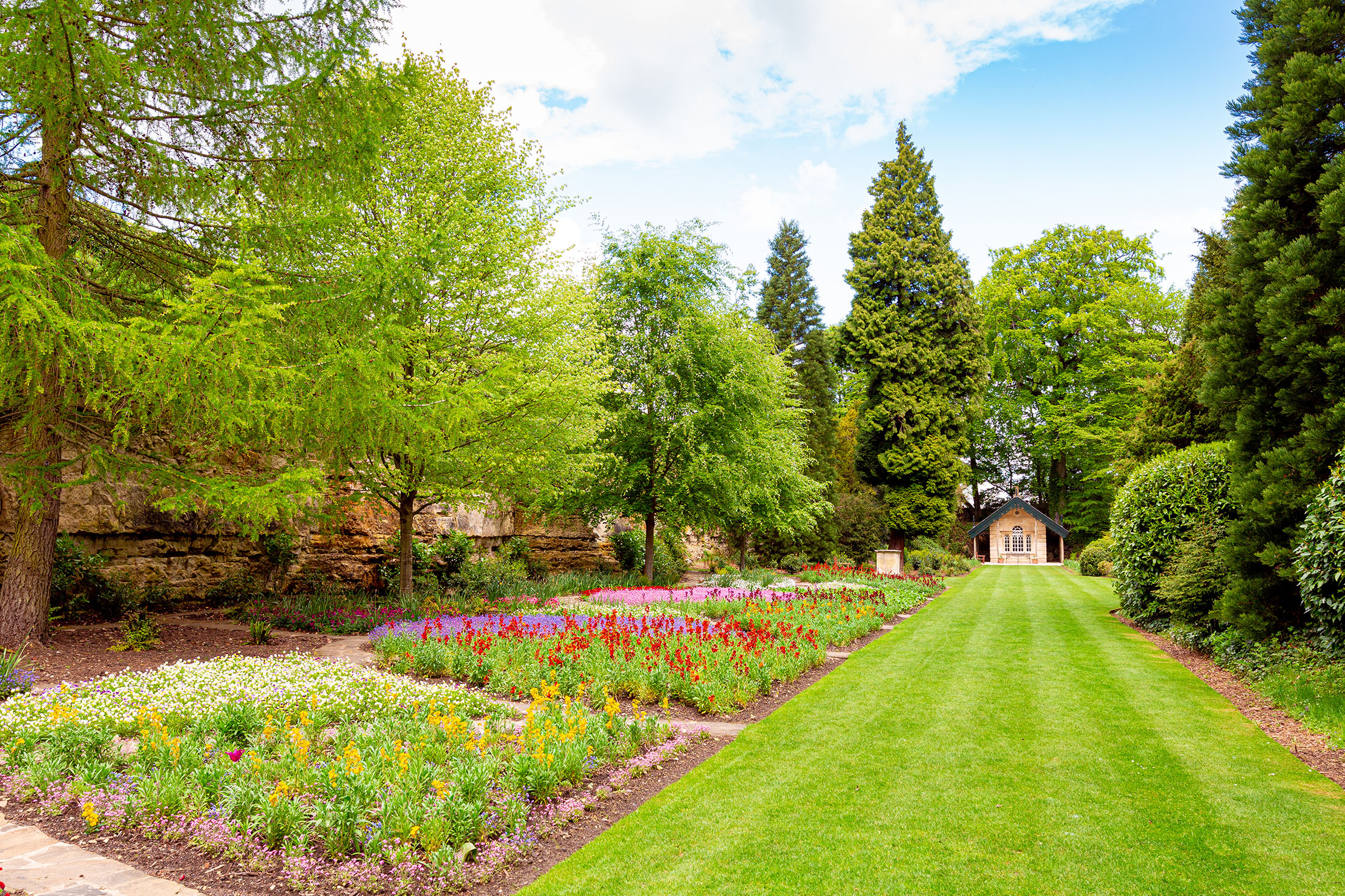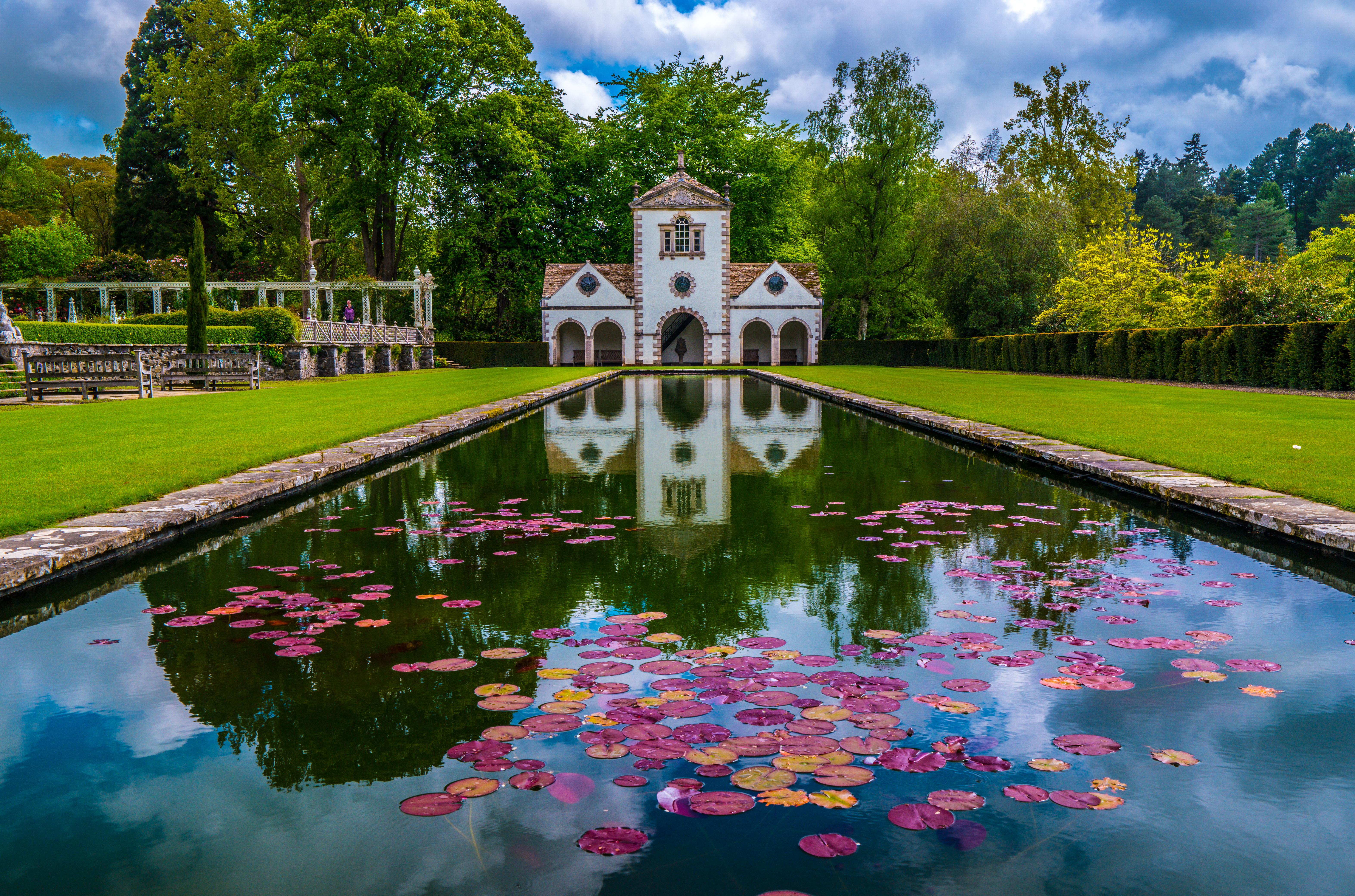Brodsworth Hall's 150-year-old follies — restored, reopened and remarkable
Brodsworth Hall's gardens and unusual follies have been restored during lockdown. Annunciata Elwes takes a look.


A Victorian rose garden, an Eyecatcher ‘ruin’ and an unusual Swiss-style Target House are among garden features newly restored to glory at English Heritage’s Brodsworth Hall, South Yorkshire, after a year of conservation works.
Both follies were built in 1866 by the Thellusson family and the Archery House, as it was then known, was used as a shelter during archery tournaments. When the army requisitioned the hall during the Second World War, things moved swiftly towards modern weaponry, with the long avenue in front of the rechristened Target House deemed perfect for rifle practice.
Now repointed and replastered, with slates and rotten timber replaced, it’s the ideal home for a new exhibition featuring historical photographs, bespoke illustrations and life-size graphic representations showing how Archery House was furnished.
The Eyecatcher, a focal point in the landscape from Target House and probably built using remnants from one of the older Brodsworth Halls, has also been repaired and is now surrounded by 1,000 British native ferns. You can see it at the 31:45 mark in this video at English Heritage's Facebook page.
Meanwhile, much work has gone into re-creating Brodsworth’s 19th-century rose garden, which now contains more than 200 ramblers, shrub and climbing varieties such as Rosa ‘Chapeau de Napoléon’, Rosa banksiae ‘Lutescens’ and ‘Souvenir de Mme Léonie Viennot’.

‘We’ve put a lot of time into investigative work… making sure that we follow the original bedding plans for the Target Range and the rose garden,’ explains head gardener Dan Hale.
‘We were very lucky in that we were able to look to historic photographs that revealed the historic planting schemes, enabling us to re-create the garden with accuracy. With 1,000 British native ferns planted around the Eyecatcher and roses that would have been popular during the Victorian period in bloom, walking through the range is now like looking through a little window into the past.’
Exquisite houses, the beauty of Nature, and how to get the most from your life, straight to your inbox.

A month-by-month guide to the most beautiful gardens to visit in Britain
Some gardens are even better in winter. Read our list of the best gardens to visit all year round.

Credit: setouchitrip.com
Bucket List Inspiration: The most beautiful gardens from all over the world
11 of the world's most stunning must-visit gardens, from vineyards in America to shrunken miniatures in Japan.
Annunciata is director of contemporary art gallery TIN MAN ART and an award-winning journalist specialising in art, culture and property. Previously, she was Country Life’s News & Property Editor. Before that, she worked at The Sunday Times Travel Magazine, researched for a historical biographer and co-founded a literary, art and music festival in Oxfordshire. Lancashire-born, she lives in Hampshire with a husband, two daughters and a mischievous pug.
